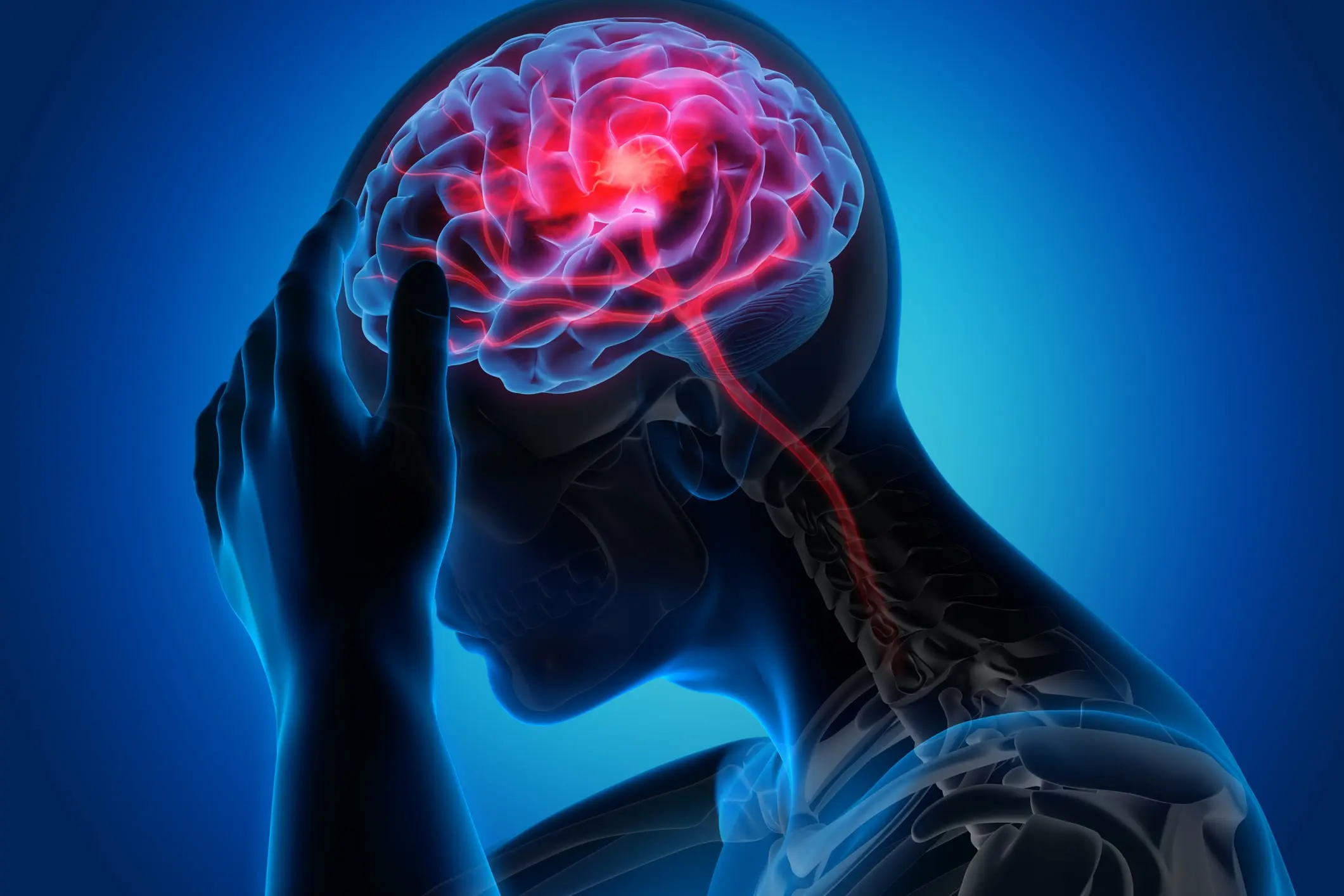The Scope of the Opioid Crisis
In 2021, over 106,000 drug overdoses were documented in the U.S., with synthetic opioids such as fentanyl accounting for 71,000, as per figures from the National Institutes of Health (NIH). The trend of opioid-related deaths has been increasing since 1999, highlighting the immense scale of this crisis.The Gravity of Fentanyl Addiction
Fentanyl addiction is a significant global concern, especially in the United States. Every day, more than 150 individuals fall victim to the lethal effects of synthetic opioids, including fentanyl. With a potency of 50 times that of heroin and 100 times that of morphine, even a minuscule 2 milligrams of fentanyl can be fatal, contingent on an individual’s size.Challenges in Opioid Treatment
Treatment for opioid addiction faces multiple hurdles. Opioid Use Disorder (OUD), despite being treatable, often leads to relapse in approximately 80% of those struggling with the dependency. A vaccine like this could provide invaluable support to those affected by the opioid crisis.Details on The Fentanyl Vaccine
Researchers have pioneered a vaccine specifically targeting the menacing synthetic opioid Fentanyl. The University of Montana (UM), the University of Washington (UW), and the University of Minnesota have each contributed to different facets of the project. This revolutionary discovery could function as a relapse prevention agent, aiming to assist individuals in overcoming opioid addiction.How Does the Fentanyl Vaccine Work?
The study’s principal author, Colin Haile, explains that their research has yielded promising results. The vaccine works by stimulating the production of anti-fentanyl antibodies, which attach themselves to fentanyl consumed by an individual. This prevents the drug from reaching the brain and facilitates kidney elimination. As a result, the drug’s euphoric effects are negated, and this helps individuals maintain their sobriety.A Look into the Vaccine’s Mechanism
The antibodies capture the drug’s molecules, much like a sponge soaking up water, rendering the drug ineffective in creating the desired high. This intervention still preserves the effectiveness of other opioid-specific treatments, like Narcan.The Legitimate Use of Fentanyl
While primarily associated with misuse, fentanyl is also a valuable anesthetic in medical settings. Haile further explains the vaccine’s specificity. The anti-fentanyl antibodies produced are precise to fentanyl and its derivatives, ensuring no interference with other opioids like morphine. Thus, vaccinated individuals can still receive pain relief treatments involving other opioids.Historical Perspective on Opioid Vaccines
The idea of opioid vaccines isn’t new. Studies from the 1970s showed potential, but research lagged as newer opioids entered the market. The resurgence in interest during the 1990s and 2000s didn’t yield market-ready solutions, but today, with renewed vigor and funding from the National Institutes of Health, researchers are optimistic.Pioneering the Opioid Vaccine
At the forefront of this research is Jay Evans, who heads the UM Center for Translational Medicine. Besides his role at UM, he co-founded Inimmune, a company dedicated to scaling the vaccine’s components for production. This enterprise operates from MonTEC, a business accelerator associated with UM. Dr. Evans optimistically stated, “We anticipate testing our vaccines in humans in early 2024,” Dr. Evans said. “The first vaccine will target heroin, followed shortly thereafter with a fentanyl vaccine in Phase I clinical trials. Once we establish safety and early efficacy in these first clinical trials, we hope to advance a combined multivalent vaccine targeting both heroin and fentanyl.”Preclinical Trials
Recent trials on animals have yielded promising results. Fentanyl failed to produce effects in vaccinated rats and pigs, suggesting the vaccine’s potential to prevent fatal overdoses and the associated euphoria in humans.Vaccine Clinical Trials
Columbia University in New York is slated to oversee the clinical trials set to begin in 2024.| Phase | Objective |
| Phase I | Prioritize patient safety and determine a safe dosage range. |
| Phase II | Evaluate optimal dosage amounts and intervals, and further assess safety. |
| Phase III | Conduct a comprehensive efficacy study, with the FDA assessing if the vaccine’s benefits outweigh its potential risks. |
Findings and Potential Impacts
Colin Haile, a leading researcher from the University of Houston, emphasized the potential societal impact of these findings, stating the vaccine could help many reclaim sobriety. Additionally, the study noted the absence of side effects in the rats. The generated antibodies specifically targeted fentanyl and its derivatives without affecting other opioids.Possible Implications and Concerns
While the vaccine presents numerous advantages, it might also have unintended consequences. Fentanyl remains a vital drug in medical settings, often used by anesthesiologists to manage severe pain and enhance the effectiveness of other anesthetics. Its short-lived effects make it preferable over longer-lasting alternatives like morphine and codeine.The Ultimate Goal of the Vaccine
The primary objective is to protect individuals, especially those in rehab, during their most vulnerable phase of addiction, where relapse chances are highest. Ideally, the vaccine’s effects would last for the critical initial years of recovery.A Holistic Approach to the Opioid Crisis
While the vaccine represents a monumental stride, it’s only one piece of the puzzle. The broader challenge encompasses evolving our healthcare system’s dependence on opioids, transforming societal perceptions about addiction, and promoting public education. As researchers stress, resolving the opioid crisis demands a multifaceted approach, with the vaccine being a crucial part of a comprehensive solution.Concluding Thoughts on The Article
This innovative vaccine promises a brighter future for those battling addiction. However, considering fentanyl’s essential role in medicine, the complexities of ensuring treatment accessibility, and the contentious politics surrounding drug policies, the path forward will require careful navigation.Understanding Fentanyl Addiction
Fentanyl, a powerful synthetic opioid, was initially introduced to the medical world as a painkiller for cancer patients in severe pain.
Due to its potency, which is estimated to be 100 times stronger than morphine and about 50 times more potent than heroin, it’s become a focal point in the ongoing opioid epidemic.
Fentanyl interacts with the body’s opioid receptors, especially those in the brain regions responsible for pain and emotions.
While it can serve as a potent painkiller, its high potency also increases the risk of overdose, especially when individuals are unaware they’re taking fentanyl or mixed with other drugs.
Statistics on Fentanyl Abuse and Potential Impact of the Fentanyl Vaccine
| Statistic/Aspect | Details |
| Overdose Deaths | In 2020, the CDC reported nearly 64,000 drug overdose deaths in the U.S. involving synthetic opioids, predominantly fentanyl. This figure underscores the escalating threat posed by this opioid.2 |
| Illicit Use | NIDA points out that many overdose deaths stem from illicitly-manufactured fentanyl, not prescription medications. Often, fentanyl is combined with drugs like cocaine or heroin, increasing the overdose risk. |
| Age Group Affected | Young adults (25-34 years) face the highest rate of fentanyl-involved overdose deaths. Nonetheless, its ramifications touch every age demographic. |
| Economic Impact | Opioid misuse, inclusive of fentanyl, imposes a multibillion-dollar burden on the U.S. economy every year, factoring in healthcare expenses, law enforcement activities, lost work productivity, and addiction treatments. |
| Geographical Spread | Fentanyl-related overdose fatalities were initially more prevalent in the northeastern and midwestern U.S. regions. However, current data indicates its spread towards the western parts. |
Potential Impact of the Fentanyl Vaccine on Society and Public Health
The advent of a fentanyl vaccine could herald a paradigm shift in addressing the opioid crisis that has gripped many nations. From a public health perspective, the vaccine could significantly reduce the number of overdose deaths, one of the most devastating outcomes of fentanyl misuse. Offering an added layer of protection against the drug’s potent effects could complement existing treatments, providing a broader safety net for those battling addiction. On a societal level, such a vaccine might alleviate the immense strain on healthcare systems, law enforcement, and communities grappling with the repercussions of opioid misuse. Moreover, potentially reducing the number of individuals ensnared in the addiction cycle could pave the way for many to reintegrate into society, enhancing workforce productivity and promoting general well-being. However, its success would hinge on its accessibility, affordability, and integration into holistic treatment approaches.Vaccine Challenges and Limitations
Developing a fentanyl vaccine brings hope in combating the opioid crisis, but some challenges and limitations must be considered.
___
Effectiveness Variability
One challenge is that the vaccine’s effectiveness can vary among individuals.
Just like other vaccines, some people may have a stronger immune response to the fentanyl vaccine, while others may not respond as effectively.
___
Time to Achieve Protection
Another limitation is the time it takes for the vaccine to provide full protection.
Vaccines usually require a certain period to build up immunity, and it may take time for the fentanyl vaccine to reach its maximum effectiveness in preventing fentanyl-related harm.
___
Duration of Effectiveness
The duration of effectiveness is another important consideration.
It’s essential to understand how long the vaccine can protect fentanyl.
If the vaccine’s effectiveness diminishes, booster shots or additional doses may be necessary to maintain immunity.
___
Potential Side Effects
Like any medical intervention, there are possible side effects with the fentanyl vaccine.
It is crucial to thoroughly study and monitor the short-term and long-term effects of the vaccine to ensure its safety and minimize any potential risks.
___
Need for a Comprehensive Approach
While a vaccine can significantly address the fentanyl crisis, it is not a standalone solution.
A comprehensive approach that includes prevention, treatment, and harm reduction strategies should be implemented alongside the vaccine to tackle the complex nature of opioid addiction.
These challenges and limitations highlight the importance of ongoing research, clinical trials, and rigorous evaluation to optimize the effectiveness of the fentanyl vaccine and address any potential drawbacks.
Current Treatment Options
| Treatment Type | Description |
| Behavioral Therapies | Cognitive Behavioral Therapy (CBT): Helps recognize and cope with situations triggering opioid use. Contingency Management: A reward-based system promoting drug-free behavior. Motivational Interviewing: Addresses ambivalence and enhances motivation to seek treatment. |
| Naloxone | Reverses opioid overdoses and is a crucial intervention in overdose scenarios, though not an addiction treatment. |
| 12-Step Programs | Community-driven approaches like Narcotics Anonymous (NA) emphasize peer support, spiritual growth, and accountability. |
| Holistic Therapies | Complementary methods such as acupuncture, meditation, yoga, and relaxation techniques. |
| Inpatient and Outpatient Rehabilitation | Inpatient Rehab: Provides a structured environment with medical and therapeutic support. Outpatient Rehab: Allows home stay with periodic treatment sessions, suitable post-inpatient rehab, or for mild addictions. |
| Support Groups and Counseling | Various support groups and counseling options offer emotional support and coping strategies apart from 12-step programs. |
| Dual Diagnosis Treatment | Addresses both fentanyl addiction and co-occurring mental health disorders simultaneously. |
Potential Challenges in Treatment
Addressing addiction to fentanyl is not just about dealing with the physical dependency.
It often requires confronting deeper and more complex issues.
Firstly, the physical withdrawal symptoms can be intense and even life-threatening, discouraging many from seeking help.2
Secondly, individuals often struggle with coexisting mental health disorders, which can worsen addiction and complicate treatment strategies.
The societal stigma around addiction often acts as a barrier, with individuals fearing judgment or misunderstanding from family, friends, and employers.
Economically, the cost of comprehensive treatment and the potential lack of insurance coverage can be daunting for many.
Once in treatment, achieving and maintaining adherence to the program is challenging due to recurring cravings, exposure to triggers, and the potential lack of a supportive environment.
These multifaceted challenges highlight the importance of holistic and patient-centric approaches to treatment.
Cost and Accessibility of Treatment
The journey to recovery from fentanyl addiction can be financially challenging for many individuals.
While insurance might cover parts of treatment, patients often bear a significant out-of-pocket expense, especially if specialized or extended care is sought.3
The disparity in access to quality treatment further exacerbates the situation.
Those in urban areas or with higher incomes might have better accessibility to reputable facilities and treatments than those in rural or economically disadvantaged regions.
Additionally, as with many new medical advancements, the potential introduction of a fentanyl vaccine raises concerns about cost and accessibility.
Even if the vaccine proves effective, questions remain about insurance coverage for such a treatment, the price for those paying out of pocket, and whether supply can meet demand, especially in areas already underserved by addiction treatment resources.
Ensuring equitable access will be paramount to ensure that those in need can benefit from this potential breakthrough.
The Fentanyl Vaccine and Beyond
While the emergence of a fentanyl vaccine offers a promising direction in combating the opioid epidemic, it represents just one facet of a multifaceted approach needed to address fentanyl addiction comprehensively.
Current treatments, ranging from behavioral therapies to drug rehab interventions, play a vital role in managing the crisis.
Ensuring equitable access to all treatments, including potential new solutions like the vaccine, remains essential in the collective endeavor to curb the devastating impacts of fentanyl on individuals and communities.
___
If you or a loved one is struggling with addiction, please reach out to us at Cornerstone Healing Center in Scottsdale, AZ.
Cornerstone is not just another addiction treatment center; we emphasize healing from the inside, believing that achieving deep, internal healing paves the way for long-lasting recovery.
Begin your journey to recovery today with our help!
___








